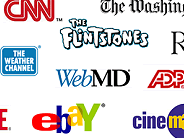Design Tips and Best Practices
Postcards Yield Plenty for You and Your Clients’ Business

Marked by their simple effectiveness and affordability, postcards have carved their own niche in the world of marketing with a number of valuable applications. First, they allow you to hone your target demographics to a specific, usable cross-section of what is first a looming amount of data. Next, Postcard Printing establishes an instant connection with prospective clients and customers because postcards aren’t hidden or encumbered by envelopes like their direct mail counterparts. These benefits, however, will only befall the marketing entity that knows how to effectively market their products and services on a postcard. Without a definitive direction, specificity, and a powerful image, it is very difficult even for postcards to avoid the waste bin.
Establishing Your Direction
Before diving into the tonal elements of the picture itself, you must first establish a definitive direction. This is based on the reaction that you want your postcard to have on the consumer and as such should act as a guide for the rest of the decisions involved in production of every aspect of your marketing message. Whatever your exact approach is, the general goal is that the consumer is intimately acquainted with your brand or brands, and will contact you or physically come to your store.
Offering an Incentive
Once a distinct direction is established, you must positively condition potential customers to complete the above mentioned steps by offering incentives to do so. The exact nature of how this is done can vary depending on your customer base but adheres to a general structure.
Brochures Broker the Deal for You
When you hand a potential customer your business card, you’re handing him your name, your company’s name, an e-mail address and a contact numbers. If you hand that same client a brochure, you’re handing him a concept, a vision and an idea he can use. Whether you’re selling widgets or left-handed ice cube trays, a brochure cements your brand’s image squarely in the mind of your customers. Having a brochure isn’t good enough—you need a great brochure. Brochure printing works. That’s why the most successful local and national companies use them.
What Makes a Brochure Great?
A picture is surely worth a thousand words—maybe even more on a brochure. A detailed photo of your product, a lush snapshot of a beach or a collage of sporting events immediately tells your customer the main focus of your company. Not only does it reveal the field you’re in, it also lets potential clients know how you feel about yourself. A company who has a well-designed brochure will receive more sales calls than a company that has less-expensive, cheap-looking brochures.
First impressions are the only impressions that matter when you’re trying to impress a new customer. You need your brochure to make the best impression possible. The traditional tri-fold brochure uses an attractive graphic on the front to lure the buyer into the greater details listed inside the brochure. You don’t have to wait for your client to open the brochure to get your message across. That thousand-word photo on the front should give them a pretty good idea.
Brochure Ideas to Help Promote Your Business
 Brochures are an economical way to promote your business. A brochure is typically tri-fold with six panels. The following are some tips to help you create an effective advertising brochure.
Brochures are an economical way to promote your business. A brochure is typically tri-fold with six panels. The following are some tips to help you create an effective advertising brochure.
FONT
You want to be sure that your brochure stands out among the rest, and the type of font you use is one way to achieve that. Keep your audience in mind when choosing a font. It’s best not to use different fonts; just stick to one. An eye-catching as well as audience-appropriate font is one of the most important elements of a brochure. Continue Reading…
Creating an Effective Logo
 A memorable logo can be an incredibly effective advertising tool. Not only will the logo be on all of the company stationary, it will be on business cards and may be displayed on the company’s products or even on a huge billboard. But creating an outstanding logo that connects with your market is easier said than done.
A memorable logo can be an incredibly effective advertising tool. Not only will the logo be on all of the company stationary, it will be on business cards and may be displayed on the company’s products or even on a huge billboard. But creating an outstanding logo that connects with your market is easier said than done.
The first thing to establish when beginning the process of creating a logo is what the logo should communicate. Keep your target audience in mind as well as what your company is in the business of doing. What is the job that should be performed by your company logo? Continue Reading…